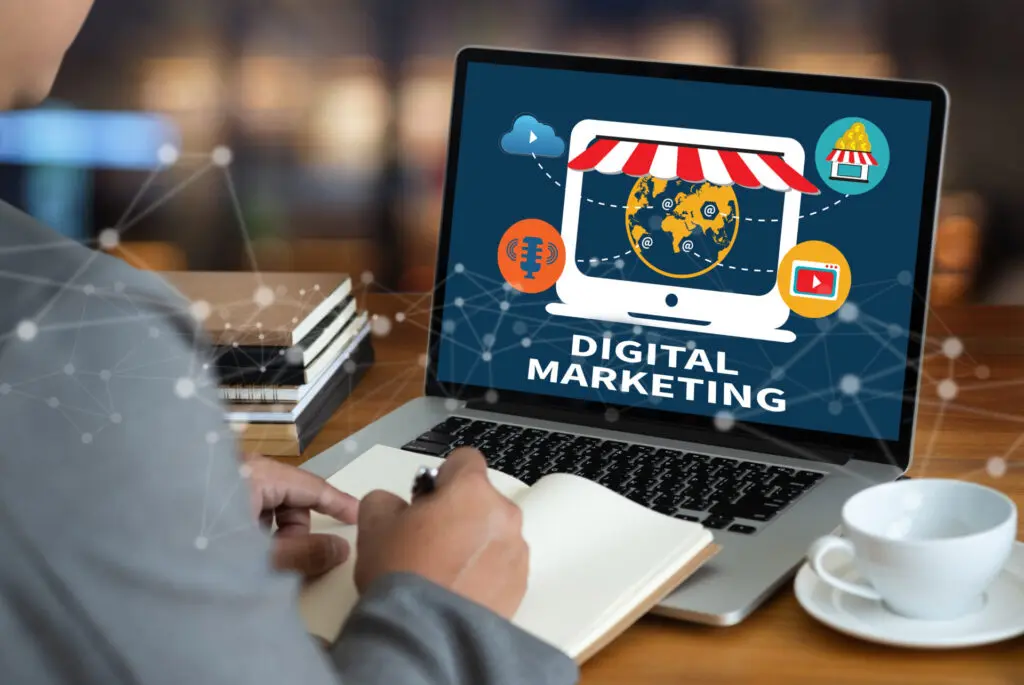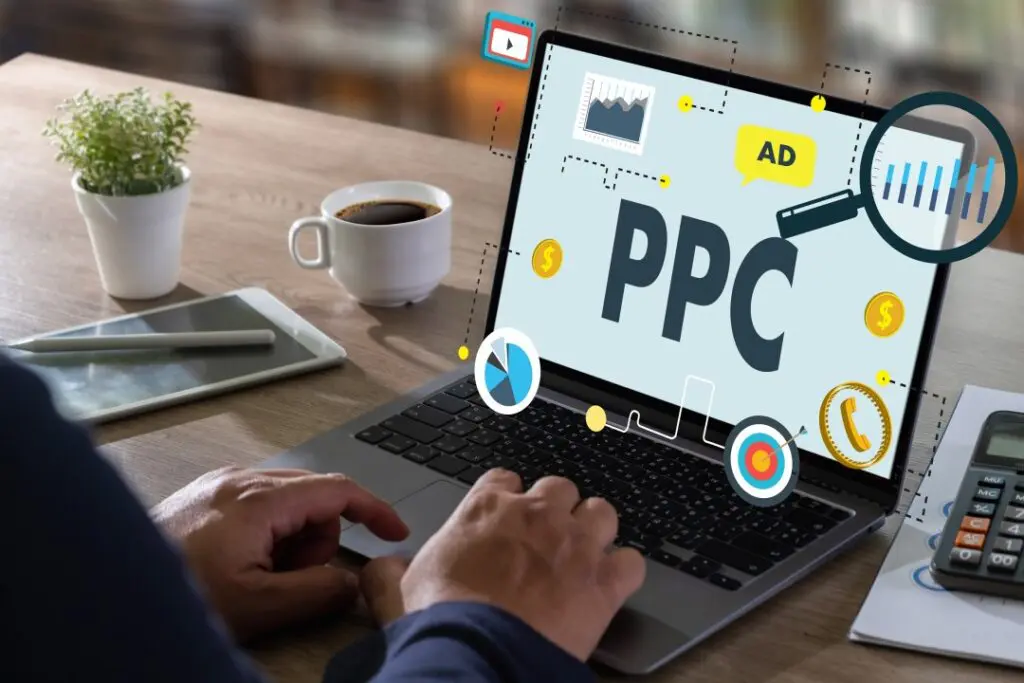Editing product images is a crucial step in creating compelling visuals for your ecommerce business.…

How to Achieve E-commerce Success: Best Tips and Ideas
In this article, we’ll explore why website design is a pivotal factor in achieving success. It ensures seamless navigation across various devices, facilitating a smooth shopping experience for customers. By prioritizing usability, businesses can enhance customer satisfaction and drive higher conversion rates, ultimately propelling their online sales growth.
Finally, we’ll touch on the importance of good customer service. Being helpful and friendly to your customers can make them want to come back and shop with you again.
The Importance of Digital Marketing for E-commerce Success
Ecommerce Successes: Digital marketing is the key to driving traffic and sales to your e-commerce website. It includes SEO, social media, emails, content, ads, and partnerships.
SEO: Optimizing Your Website for Search Engines
SEO is crucial for e-commerce as it helps your website rank higher in search engine results pages (SERPs). This means that when people look for things you sell, your website could show up first.
To improve your website for search engines, make great content, use popular words, and get links from good sites. With a good SEO plan, you can get more people to visit your online store naturally, which boosts your chances of selling things.
Understanding Keyword Research
Before fine-tuning your website content, thorough keyword research is essential. Finding the best words that your potential customers use to search for stuff like yours is a big part of SEO.
Tools like Google Keyword Planner or SEMrush can help you find the words that lots of people search for but not many websites use. Getting other good websites to link to yours can make your site seem more important to achieving success.
On-Page SEO Techniques
On-page SEO involves optimizing individual web pages in order to rank higher, achieve success, and earn more relevant traffic. This includes not only the content but also the HTML source code of a page. Key elements of on-page SEO include title tags, headings, content structure, and internal linking.
Each page should have a unique title tag that includes the target keyword, and headings should be used to structure content clearly. Also, making sure every image has alt text with the right keywords boosts equal access and relevance.
Off-Page SEO Strategies
Off-page SEO means doing things outside your website to help it show up better in search results. The most significant off-page SEO factor is the number and quality of backlinks pointing to your website.
Getting e-commerce from other good websites to link to yours can make your site seem more important. Remember, it’s not just about the quantity of backlinks but also about the quality and relevance of the sites that link to you.
Social Media Marketing: Engaging with Your Audience
Social media is an incredibly powerful tool for e-commerce businesses. Since lots of people use social media, it’s a good way to connect with the people you want to reach.
If you keep sharing interesting stuff and talking to your followers, more people will know about your brand and want to keep coming back. You can use social media to show off what you sell, run deals and contests, and get more people to visit your website.
Crafting a Social Media Strategy
It’s important to have a solid plan for social media if you want your online store to achieve. It’s about nailing down your goals, knowing your audience, picking the perfect platforms, and mapping out your content.
Your goals could range from raising brand awareness and amplifying engagement to driving sales. Once you know your objectives, you can tailor your content and interactions to meet these goals. Also, make sure you post regularly and check how things are going so you can make your plan better as you go along.
Leveraging Social Media Advertising
While it’s nice to get attention on social media without paying, using ads lets you pick who sees your message more precisely. Facebook, Instagram, and Twitter let you choose who sees your ads based on things like age and interests.
Crafting ads that really speak to your audience can seriously amp up your reach and conversions. Trying out different ad styles, words, and pictures helps you figure out what works best for your online store.
Engaging with Customers on Social Media
Talking to your audience and listening to what they say is just as important as posting stuff on social media. Join chats, reply to comments, and sort out concerns fast.
Sharing stuff that your customers make, like photos or reviews, is a nice way to say thanks and make people feel like they’re part of a group. Live sessions and Q&A on Instagram or Facebook make your brand feel more personal and connect better with customers to achieve success.
Email Marketing: Building Relationships with Customers
Email marketing is really important when it comes of achieving e-commerce success. It’s a highly effective way to communicate with your customers, build relationships, and drive sales.
By creating targeted email campaigns, you can deliver personalized content and promotions to your subscribers. That keeps your customers hooked and more likely to come back for more.
Designing Effective Email Campaigns
Making good email campaigns isn’t just about writing a great message. It’s also about dividing your audience, making what you send personal, and making it simple for people to buy. Splitting your list lets you send special emails to different groups of customers based on what they like and how they act.
Personalizing emails is easy. Just use the customer’s name or suggest products they might like based on what they bought before. Your emails should have a clear message telling subscribers what to do next, like buying something or taking another action you want.
Maximizing Email Delivery
Making sure your emails actually get to your subscribers’ inboxes is super important. To make sure your emails get delivered, keep your list clean, avoid using spammy words, and use a good email service to achieve e-commerce success.
Regularly tidying up your email list, removing inactive subscribers, can boost engagement rates and delivery e-commerce success. Testing different email subject lines and content helps you see what your audience likes and gets more people to open your emails.
Automating Email Marketing
Email automation can save time and increase efficiency. Automating welcome emails, thank-you notes, and follow-ups amps up the personal touch for customers.
Sending reminder emails for abandoned carts helps recover sales by reminding customers to complete their purchase. Automating tasks keeps you in touch with customers without doing everything by hand all the time.
Content Marketing: Providing Value to Your Audience
Content marketing is sharing useful and interesting stuff to grab and keep a specific group’s attention to achieve e-commerce success. It’s a great way to help your audience and show you know a lot about your industry.
Creating cool and useful stuff like blogs, videos, and infographics brings more people to your site and makes them want to return. Content marketing is crucial for your digital strategy, lifting SEO, social media, and email results for an efficient marketing strategy to achieve e-commerce marketing.
Creating a Content Marketing Plan
Making an e-commerce success content plan is really important for organizing and carrying out your content strategy well. This plan should outline your content goals, target audience, content types, distribution channels, and a content calendar.
Your content should focus on what your audience wants to know, which helps build trust and show you know your stuff. Using different kinds of stuff like blogs, videos, and pictures can make more people interested and involved.
Producing High-Quality Content
The key to killer content marketing? Top-notch content that’s informative, engaging, and spot-on for your audience. This involves diving into research, crafting detailed articles, and whipping up eye-catching digital media.
Mixing timeless content that’s always relevant with current updates keeps your content fresh and well-rounded. Plus, keeping your content fresh ensures it stays accurate and keeps delivering value to your audience.
Distributing and Promoting Content
Great content is just one part; you’ve got a make sure it gets to your audience too. Promote your content across various channels, including social media, email newsletters, and your website.
Teaming up with influencers, guest posting on related blogs, and joining community chats can boost how far your content goes. Checking how well your content is doing using analytics can help you see what your audience likes. Then you can use that info to decide what to do next with your content.
Pay-Per-Click Advertising: Capturing Immediate Traffic
PPC advertising is when advertisers pay each time someone clicks on their online ad. It’s a way of buying visits to your site, rather than attempting to earn those visits organically.
Understanding PPC Campaigns
For a PPC campaign to succeed, choose the right words, make eye-catching ads, and create convincing pages to encourage purchases. Find keywords for PPC that bring in sales without being too expensive due to competition.
Crafting ad copy that grabs attention and addresses the wants and needs of your audience is key. Your landing pages should be optimized for conversions, with a clear value proposition and a strong call-to-action.
Managing and Optimizing PPC Budgets
Making sure you use your PPC budget wisely is really important to get the most out of your investment. This means picking a budget that fits your goals and keeping an eye on your keyword bids, changing them when needed.
It’s also critical to analyze the performance of your ads and make data-driven decisions to optimize your campaigns. This could include pausing disappointment ads, adjusting bids, or refining your targeting options.
Integrating PPC with Other Marketing Strategies
PPC delivers quick results, but it shines even brighter when combined with other digital marketing tactics. Take PPC keyword data, for example. It’s like a roadmap that guides your SEO and content marketing strategies.
Retargeting ads and email blasts can work together to remind people who have looked at your stuff but haven’t bought anything yet. A solid marketing plan helps you use each channel’s strengths to the fullest.
Affiliate Marketing: Expanding Reach Through Partnerships
Affiliate marketing is when a company pays other people to bring them customers or leads. Affiliates make money by promoting the company.
Setting Up an Affiliate Program
To start an affiliate program, decide how much to pay, find and approve affiliates, and give them what they need to promote your stuff. This might include banners, links, and product information.
Partnering with affiliates who match your audience and brand values is key. Plus, it makes sure the traffic they send your way is spot-on and more likely to turn into conversions.
Managing Affiliate Relationships
When you really connect with your affiliates, it can mean better promos and a healthier bottom line for your program. Just keep the convo going, throw in some sweet exclusive deals for your top dogs, and don’t forget to give feedback. That’s the recipe for a rock-solid partnership.
Keeping tabs on how well your affiliates are doing and analyzing their performance is super important too. This information can show you which partnerships are best and where you can make things better.
Leveraging Affiliate Marketing for Product Launches
Affiliate marketing can work really well when you’re launching a new product. By leveraging the networks of your affiliates, you can create buzz and expectation for your new product.
Giving affiliates early access, exclusive content, or special deals can make them more excited to share with their followers. This plan can help your launch be a success and get lots of sales right away.
The Power of Customer Engagement for E-commerce Success
Customer engagement? It’s basically all about keeping the convo going and building those solid bonds with your peeps. It’s super important for e-commerce success because it boosts customer satisfaction, loyalty, and retention.
Personalization: Creating a Tailored Experience for Customers
Personalization means tailoring your customer interactions to fit their preferences, behaviors, and what they’ve bought before. When you give personalized suggestions, content, and deals, shopping becomes more fun, and it boosts the chances people will buy things.
Using customer info lets you group people based on what they’re interested in and send them messages that matter. Personalization can be applied across various touchpoints, including your website, email marketing, and advertising campaigns.
Providing Excellent Customer Service
Good e-commerce success and customer service are really important for online shopping. It can make customers happier and more likely to come back and shop with you again. Offering support through live chat, email, and phone helps customers feel valued and supported.
Answering quickly, fixing problems fast, and going the extra mile to make customers happy can make them big fans of your brand. Making sure your customer service squad knows their stuff and has your back is crucial for keeping things smooth sailing in the long haul to achieve e-commerce success.
Building Trust and Credibility
Trust and credibility are crucial for e-commerce success, especially when customers can’t see products in person before buying. Being open, real, and sticking to your word are essential for gaining your audience’s trust.
Showcasing trust signals like customer reviews, security badges, and clear return policies eases customer worries about online shopping.
Providing clear product descriptions, great images, and detailed sizing info helps manage expectations and reduces returns
Conclusion
To achieve e-commerce success, you need to use lots of different strategies and tactics. Use digital marketing to engage customers to make your brand stand out and boost sales, or you can contact companies to start your digital marketing strategy.
There are tons of paths to try, from sprucing up your site for search engines to diving into social media, email, and paid ads. Keeping customers interested through personalization, great service, and trust-building helps maintain long-lasting relationships.
E-commerce success means always learning, adapting, and staying ahead of the competition. To keep your e-commerce biz booming, stay on top of trends, listen to feedback, and adjust your strategies when necessary.
































